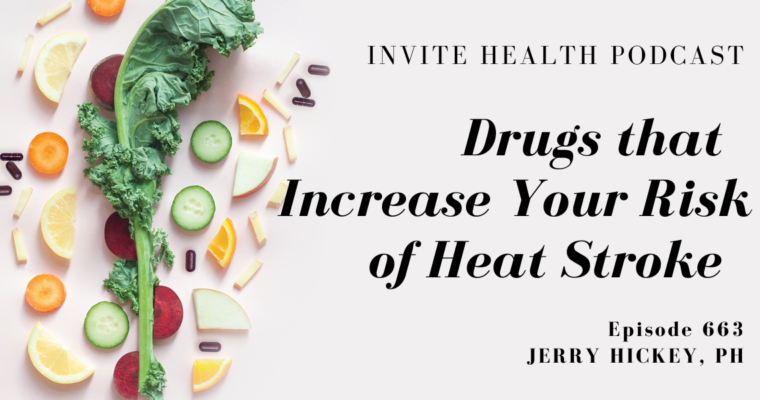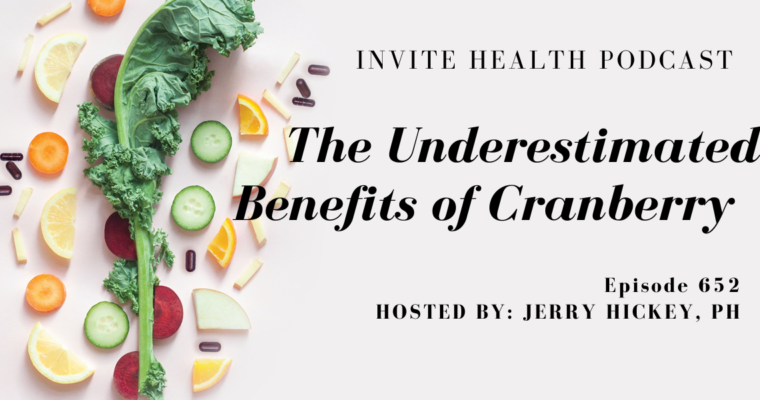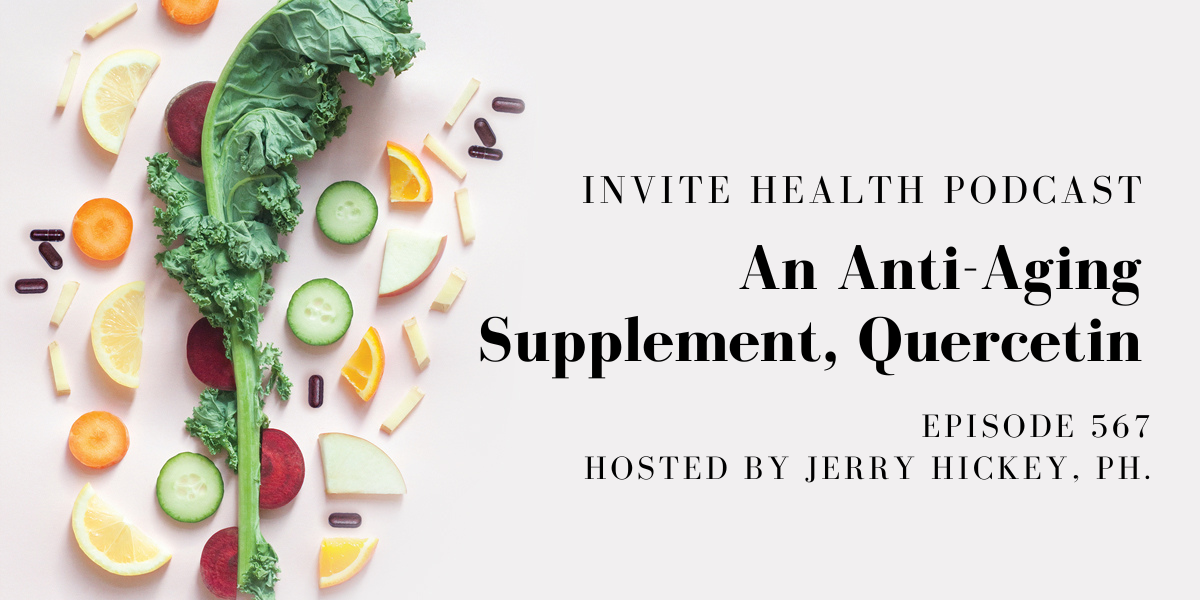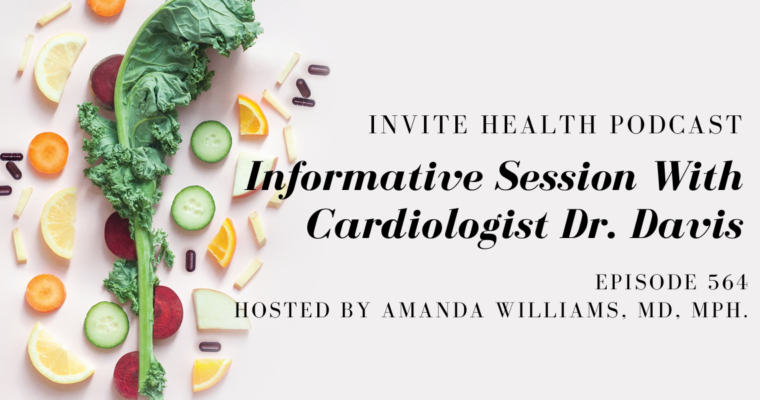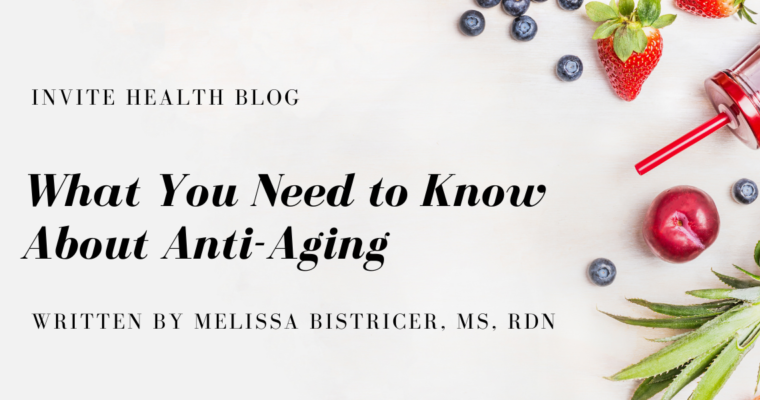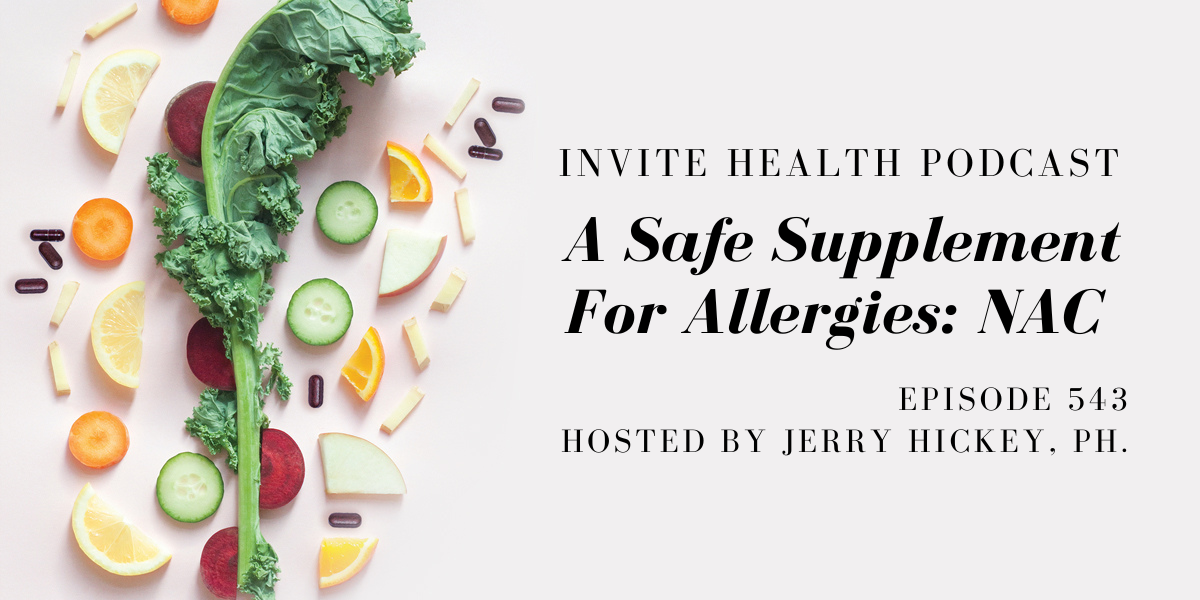Allergies
Subscribe Today!
Please see below for a complete transcript of this episode.
A Safe Supplement For Allergies: NAC – Podcast Episode 543
Hosted by Jerry Hickey, Ph.
*Intro music*
InViteⓇ Health Podcast Intro: Welcome to the InViteⓇ Health Podcast, where our degreed healthcare professionals are excited to offer you the most important health and wellness information you need to make informed choices about your health. You can learn more about the products discussed in each of these episodes and all that InViteⓇ Health has to offer at www.invitehealth.com/podcast. First time customers can use promo code PODCAST at checkout for an additional 15% off your first purchase. Let’s get started!
*Intro music*
Jerry Hickey, Ph.: [00:00:40] It’s allergy season with all of those annoying symptoms that can ruin your day. People with allergies can wind up with sinusitis, inflamed sinuses, headaches, sinus headaches, itchy ears, itchy skin, nausea in the intestines, runny nose, sneezing, sore throat, phlegm, coughing. That’s due to the where about of the immune cells involved with the allergic reaction. And many people wind up reaching for an antihistamine drug that you could get in pharmacies. But not so fast there. Because antihistamine drugs have an unwanted complication that they also can inhibit acetylcholine. Acetylcholine is a very important transmitter in the body. A neurotransmitter is in the brain for your memory and for figuring things out, for learning and for healing the brain and a neurotransmitter for your muscles and your nerves. So you don’t want this anti cholinergic activity, anti acetylcholine activity, because it’s no good for your memory long term. So people are looking for valid replacements for the antihistamines. And one of those is an amino acid called cysteine. But there’s a catch there and I’ll tell you about that in a minute. [00:02:10]
[00:02:11] So welcome to my episode NAC for allergies. My name is Jerry Hickey, I’m a nutritional pharmacist. Um You can find all of our episodes for free, all the InViteⓇ Podcast episodes where ever you listen to podcasts or just go to invitehealth.com/podcast, we have hundreds of them. You can also find us on Instagram, Twitter and Facebook at InViteⓇ Health. And of course, it would be nice if you subscribed and if you left us a review when you listen to these podcast episodes. [00:02:43]
[00:02:44] So let’s get going, cysteine. C.Y.S.T.E.I.N.E is an incredibly important amino acid. Amino acids make up proteins typically, so you break down protein you release amino acids, and cysteine can be used for many, many indications. It’s great for the brain, it’s great for your eyes, it’s great for your lungs, it’s great for allergies, it’s great for blood flow to the heart, it’s it has so many incredible attributes. Including helping the liver get rid of toxins, how about a kidney removed toxins, working as an anti aging nutrient. The problem is you can’t just take cysteine cause it’s not very stable. So it can quickly convert to a free radical that can damage your cells. So how did scientists get around this? They got around it in the um about the 1970s. They created N-Acetyl Cysteine. They took cysteine and they attached an acetyl group to it, on the nitrogen all amino acids have nitrogen. Were made out of nitrogen and carbon and hydrogen in any event all amino acids have a nitrogen molecule they attach an acetyl group to it and that stabilizes it. And now you can take it as a supplement very safely. In fact, it’s a very positive, very preventative, very beneficial supplement. I’ll go into some of its utilities. [00:04:07]
[00:04:10] But an acetyl group is simply a combination of carbon, hydrogen and oxygen that they attach to the cysteine. And acetyl groups are components of many organic compounds in the human body. I mentioned acetylcholine before, acetylcholine is blocked to a degree by antihistamines, and that’s not good for your brain. Well, N-Acetyl Cysteine actually has an acetyl group, so that’s very interesting. In any event, N-Acetyl Cysteine you always take it with food because it can upset the stomach a little bit. A) It really helps protect your lungs. I use it all the time in people with emphysema, bronchitis, bronchiectasis, emphysema, asthma. It’s very helpful for lung inflammation. 2) It can help open up the blood vessels leading to the heart so it can improve blood flow to the heart. Oh 3) Or did I say before A-B-C one, two, three, same thing. Three It has a benefit for many women’s issues, like endometriosis and polycystic ovarian syndrome. [00:05:19]
HOW TO IMPROVE ACETYLCHOLINE FOR MEMORY – INVITE HEALTH PODCAST, EPISODE 396 >> Listen Now!
[00:05:23] Um it’s fantastic for allergies. Oh, and by the way, it’s converted to this wonderful antioxidant. Well, one of my friends, Dr. Alan Pressman, wrote the GSH phenomenon about a molecule in the human body called glutathione. And he called it the mother of all antioxidants, which to a degree is true. Glutathione super powerfully protects the brain, and the eyes, and the kidneys, and the liver, and the heart, tissues throughout the body. It’s wonderful it protects our immune cells and protects our red blood cells. It’s just amazing. But you can’t take glutathione. You’d have to take very large amounts of it to get any benefit that would be very expensive. NAC, N-Acetyl Cysteine is very easily converted into glutathione. So one of the benefits of using NAC is you create glutathione which strongly protects your brain and your eyes and many other organs and tissues. But we’re really talking today about allergies. [00:06:16]
[00:06:19] So this is a study on people with recurrent acute rhinosinusitis. So what’s that? Oh, they get severe inflammation in their nose um comes frequently, acute means it’s harsh and it comes on quickly. Frequently, this is due to allergies. This is a systematic review and meta analysis, which means that they poured through studies. They picked out the studies that looked valid, that were well performed and well reported, and they lacked bias. So they’re picking out the better studies. And when you do a meta analysis properly, it tells you something works or it doesn’t work. So this is Indiana University Health and also Indiana University School of Medicine over in Indianapolis. University of Kentucky College of Medicine. The University of Louisville, Department of Geology. You know, ear, nose and throat medicine. It’s ten studies in total, 890 patients. And they said, here’s what we use intranasal steroids, normal saline in the nose, NAC, and antibiotics. So let’s go through that. Intranasal steroids is a problem. That means you’re you’re you’re spraying corticosteroids like a hydrocortisone related molecule into the nose. It’s the same as our stress hormones, our cortisol. The problem is it causes, it actually causes allergies to fungi. This can lead to allergies, to fungi and yeast. It can also thin the membranes of the nose. Then they give antibiotics. I mean, I’ve seen so many times as a pharmacist, I owned several pharmacies in Manhattan that the doctors that people would go in with sinusitis, severe sinusitis or rhinosinusitis. And the doctors would give antibiotics and a steroid nasal spray. And they’d feel good for about six weeks. And then they come back again. But I found out the natural means really helped. So I’m really, really big on nasal saline. Nasal saline, saline means it’s sodium chloride, you know, salt, salt water. But it’s the same amount of salt in the mixture that you would get in the human system. Our blood is 0.9% saline, sodium chloride, salt, it’s 0.9% salt. So when you make something the same 0.9%, it never stings you. So they can use their 0.9% sodium chloride in the eyes and a nose that doesn’t sting. So it’s a great wash for the sinuses. And I found that it consistently helps people who have allergies of acute sinusitis rhinosinusitis. And then they in the review they said NAC works, NAC is N-Acetyl Cysteine. That’s what we’re talking about today. The stabilized form of cysteine. [00:09:15]

[00:09:18] NAC is a mucolytic, it breaks down mucus. It breaks down the bonds of mucus. In fact, in people with cystic fibrosis and cystic fibrosis, these people have a gene or genes that make their mucus really thick. And it’s hard for them to expectorate the mucus. They can’t expel the mucus and it’s very dangerous for them. So they use NAC and a nasal spray to break down the mucus, but um NAC breaks down the bonds of mucus. So it’s anti-mucolytic, but it’s more than that it’s an anti-inflammatory in the entire respiratory tract, in the nose, in the mouth, in the nasal pharynx. You know, that bind at the back of the throat and the lungs and the bronchi. The bronchi are the tubes going into the lungs and the trachea, that’s the tube from your throat. So there’s your nose and your mouth. And then there’s nasal pharynx, which is to bend at the back of the nose and mouth that goes into the trachea, your windpipe, and that goes down to the bronchi, which are two forks that come off the trachea, that go into the lungs. NAC is an anti-inflammatory and all these tissues and the respiratory tract and and also besides that, it’s creating glutathione. And in fact, they found when they gave people NAC or glutathione on people who had severe COVID back during the COVID pandemic days. That NAC and glutathione was really helping these people breathe. So it really does have an impact. So they found that, yes, normal saline and NAC are very helpful and I find in people with allergies NAC is amazing. Because NAC also helps to detoxify the body. It helps the liver and kidneys break down things you’re allergic to that’s called allergens and expel them. So in many ways, it’s helping people with sinusitis, stuffy nose, allergy symptoms. It’s fantastic. [00:11:05]
[00:11:08] So in the International Journal of Immunopathology and Pharmacology, that’s a pharmacy journal, laryngologists at the University of, in Serbia and the Hospital of IRCCS, both in Italy. And they said normally treating rhinosinusitis requires antibiotics, corticosteroids and mucolytic. Look, I didn’t even mention the problem with antibiotics, antibiotics kill off the good bacteria that causes all kinds of health issues that can even make allergies worse. There’s a lot of data that people use, a lot of antibiotics. They wind up with lung problems, they wind up with sinusitis, but especially they wind up with allergies. So they found that in these people NAC worked very well for helping with allergies and sinusitis. [00:11:57][49.0]
[00:12:00] Now, here’s the thing. I found that combining before and after really helps people with allergies. You do not have to take an antihistamine. I found out certain things slow down the allergic reaction in the first place and in NAC like a sponge kind of mops it up. So any of the following are very helpful, Quercetin. Quercetin is a flavonoid you find in really good foods. Like it’s a little bit in tea, its a little bit in broccoli and spinach, it’s a little bit oranges and apples, but even a good diet, you only get about 25 to 50 milligrams of Quercetin every day. If you do 300 to 500 milligrams of Quercetin three times a day, it’s very good for allergies. It helps stabilize the cells that are involved with allergies. So you don’t, you have less of an allergic reaction to begin with. Stinging nettle also helps, which is interesting because stinging nettle can make your your your skin itchy on contact. Yet stinging nettle as a tea or in a capsule is very good for allergies. Vitamin C, Black cumin seed. Black cumin seed is very good for the lungs, breathing and allergies. Lots of studies on that. I’ve done podcast episodes on black cumin seed before. [00:13:12]
TURN TO BLACK SEED TO TARGET SNOW MOLD – INVITE HEALTH PODCAST, EPISODE 511 >> Listen Now!
[00:13:13] Cordyceps with Mushroom is very helpful for inflammation and breathing and allergies and probiotic bacteria, but this is very interesting. An allergy is like obviously an incorrect incorrect reaction to something that’s innocuous, meaning harmless by your immune system, like being allergic to an apple, being allergic to shrimp. I mean, this should not happen. Being allergic to pollen or grass or dogs and cats, it should not happen. It turns out that if you destroy the rich complex of bacteria in your intestines, you’re much more likely to develop allergies. And there’s been many studies in children and adults where you can truly help their allergies by giving certain strains of probiotic bacteria, certain species and strains. It gets to the heart of the issue. It kind of realigns the immune system and re-educates the immune system to ignore ideologies. It worked for me, I I used to have dog and cat allergies. I used to have allergies to red wines. I used to have allergies to pollens, all kinds of pollen. Zero. I would say my allergies were severe, I would say at this point, I really don’t have allergies. They’re so minor. It doesn’t even, I don’t even notice them. [00:14:39]
[00:14:41] So the strains that have a lot of data behind them for getting rid of allergies, literally curing them. Probiotic strains, lactobacillus, plantarum, Lactobacillus rhamnosus. And to a degree bifidobacterium animalis sub-species, lactis. So but it takes time for the probiotic bacteria to re-educate your immune system to help with the allergies. So in the meantime, use something such as NAC 600 milligrams three times a day with meals to help out with the allergies. It’s rather dramatic. So right now, you can help treat your allergies with an NAC 600 milligrams three times a day. And also, some black cumin seed maybe 500 milligrams three times a day. But on the long term. So that’s the treatment that’s helping you with the symptoms right now. Black cumin seeds stabilizes the cells, so you have less of an allergic reaction to begin with and then the NAC kind of mops it all up. Whatever is released from your immune cells the NAC kind of mops it up like a sponge gets rid of the allergic reaction. So that’s a really good one, two for treating allergies. And then everyday do a good probiotic and you’ll see that the probiotic literally helps cure your allergies. [00:15:52]
[00:15:54] So thanks for listening to today’s InViteⓇ Podcast episode. You can find all of our episodes for free wherever you listen to podcasts or just go to invitehealth.com/podcast And of course, if you could leave us a review and if you could subscribe, it’s very helpful. You can also find InViteⓇ on Instagram, Twitter and Facebook at InViteⓇ Health. I want to thank you for listening. Hope to see you next time on the next episode of the InViteⓇ Health Podcast. Jerry Hickey signing off. [00:15:54][0.0]
*Exit music*


